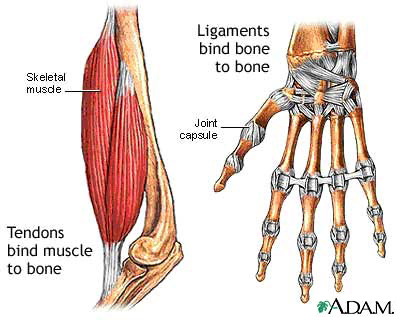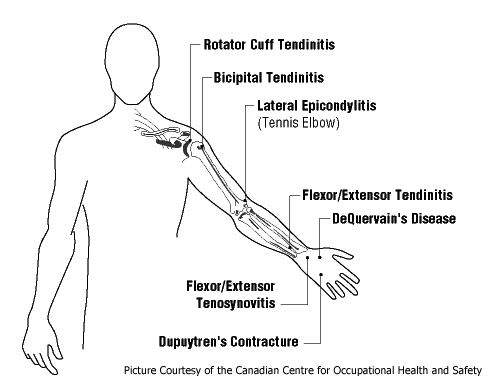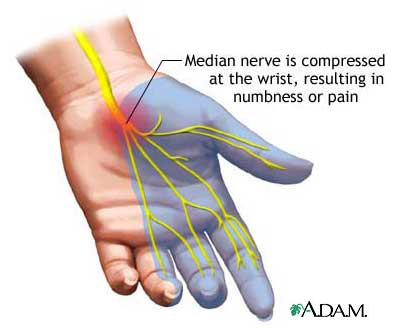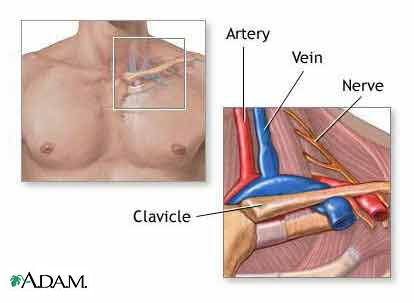Last Revised: February 09, 2024
Repetitive Stress Injuries
Repetitive Stress Injuries may also be referred to as Cumulative Trauma Disorders. The word cumulative is important. These injuries develop gradually over weeks, months or years from repetitive movements, awkward postures, forceful exertions, vibration or compression (pressing against hard surfaces.)
Symptoms of repetitive stress injuries may include pain, restriction of joint movement, soft tissue swelling, numbness, tingling and decreased manual dexterity.
It is important to seek medical attention if you are experiencing the symptoms of repetitive stress injuries. If left untreated, repetitive stress injuries may lead to permanent disabling injuries. Employees of the University of Pennsylvania should seek treatment at HUP Occupational Medicine, 215-662-2354. Students of the University of Pennsylvania should seek treatment at Wellness (Student Health).
Not everyone has the same susceptibility for repetitive stress injuries. Individual risk factors include age, gender, smoking, physical activity, strength and diet.
Tendons are rope-like structures that bind muscle to bone. Some tendons are partially or completely covered in a protective sheath.

There are three types of tendon disorders:
- Tendinitis: An inflammation of the tendon causing point tenderness and swelling.
- Tenosynovitis: An inflammation of the lining of the tendon sheath causing point pain and swelling.
- Ganglion Cyst: An accumulation of fluid within the tendon sheath.
Examples of tendon disorders are:
- DeQuervain's Syndrome: Tenosynovitis affecting the tendons on the side of the wrist and the base of the thumb.
- Flexor/Extensor Tendinitis: Tendinitis affecting the tendons in the wrist
- Stenosing Tenosynovitis (Trigger Finger): Tenosynovitis affecting the tendons in a finger or thumb.
- Bicipital Tendinitis: Tendinitis affecting the biceps tendon.
- Rotator Cuff Tendinitis: Tendinitis affecting the tendons in the shoulder.
- Lateral Epicondylitis (Tennis Elbow): Tendinitis affecting the tendons on the outer side of the elbow.
- Medial Epicondylitis (Golfer's Elbow): Tendinitis affecting the tendons on the inside of the elbow.

Nerve disorders can result from repeated pressure on a nerve.
Examples of nerve disorders are:
Carpal Tunnel Syndrome: Compression of the median nerve, which runs through the wrist, causing pain, numbness and tingling in first three fingers and base of thumb.
Cubital Tunnel Syndrome: Compression of the ulnar nerve, which runs over the elbow, causing pain, numbness and tingling in ring finger and little finger.

Neurovascular Disorders involve both the nerves and adjacent blood vessels. An example of a neurovascular disorder:
Thoracic Outlet Syndrome: Compression of the nerves and blood vessels between the neck and shoulder causing numbness in fingers and hand.

Pain can come from the spine, muscles, nerves or other structures in the back. Symptoms can include tingling, burning sensation, dull ache, sharp pain and weakness in legs or feet.
Back pain is not necessarily caused by one event. Back pain may be the result of improper postures (sitting or standing) or lifting over a long period of time.
Lower back pain is pain that occurs in the lumbar region of the back.

